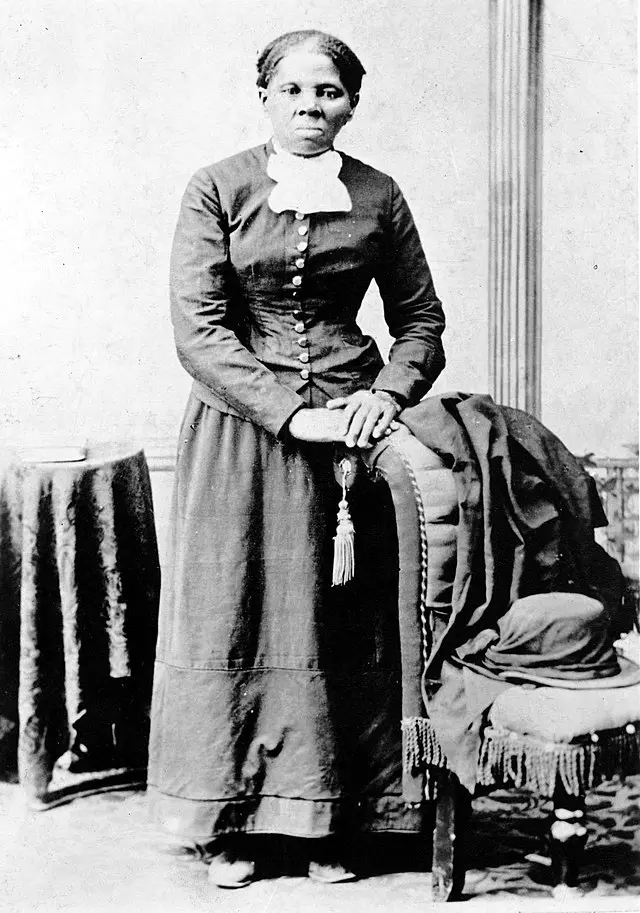
Brief Background of Harriet Tubman
Born into slavery in Maryland around 1822, Araminta Ross, later known as Harriet Tubman, was a symbol of courage and freedom in American history. Forced to work at an incredibly young age, she experienced harsh conditions, which instilled in her a deep sense of injustice. A head injury sustained during her years as a slave gave her life-long health issues. However, it was these experiences that ignited her pursuit of freedom. Renaming herself Harriet Tubman after her marriage to John Tubman, she would later be revered for her role in the Underground Railroad and numerous other contributions to the antislavery movement.
Harriet Tubman’s Journey from Slavery to Freedom
Early Life as a Slave
Harriet Tubman experienced the harsh realities of slavery at a very young age. She spent her formative years working in the fields and in her master’s house. Tubman’s life took a dramatic turn when she became seriously injured by a weight thrown by an angry overseer. The injury caused seizures and headaches that troubled her throughout her life. Despite this adversity, she had an indomitable spirit and an unshakeable dream of freedom. This dream laid the foundation for her audacious escape and subsequent liberating missions.
Escape from Slavery
In the darkest hours of the night, in the year 1849, Harriet Tubman took the brave leap towards freedom, escaping a plantation in Maryland. Her perilous journey was aided by the Underground Railroad, a secret network of safe houses led by abolitionists and sympathetic allies.
Despite severe challenges and unthinkable risks, Tubman’s indomitable spirit led her towards Pennsylvania, a free state, marking the end of her personal bondage. This escape was her first stride towards a life dedicated to fighting for the emancipation of enslaved African-Americans, laying the foundation for one of the most transformative figures in the annals of American history.
The Gains of Freedom
Commencing her journey towards liberation in 1849, Harriet’s courage marked a significant epoch of resistance against slavery. A sentinel figure, she harnessed bravery, risking her life for the freedom of others. Utilizing the Underground Railroad, she made an astounding 19 expeditions, leading around 300 slaves to a liberating life.
This endeared her to many who lovingly christened her ‘Moses’, a biblical figure associated with liberation. Her insurmountable audacity was further etched into history when she orchestrated a military campaign during the Civil War, leading to 700 slaves’ emancipation. Tubman’s relentless pursuit translated into landmark victories against societal injustices.
The Underground Railroad and Harriet Tubman’s Role
What is the Underground Railroad?
The Underground Railroad was a sprawling network of safe houses and secret routes used in the 19th century by enslaved African-Americans seeking freedom. This covert system covered vast distances, ranging across the southern plantation states all the way to the free soil of Canada.
Harriet Tubman’s pivotal role as a ‘conductor’ on the railroad saw her guide hundreds of slaves to freedom. Putting her own life in danger, she boldly ventured into slave-holding regions, using her knowledge and astute navigation to bypass authorities. Often referring to herself as ‘Moses’, she became an instrumental figure in the abolitionist movement.
Harriet’s Role in the Underground Railroad
Regarded as a beacon of hope and bravery, Harriet Tubman played an integral role in operating the famous Underground Railroad, which proved instrumental in the liberation of countless slaves. Born into slavery herself, Tubman escaped and transformed her freedom into a lifelong mission to free others likewise. She risked her life repeatedly by returning to the Southern States nearly 19 times, contributing to the emancipation of approximately 300 slaves. Her exceptional navigational skills, strength, and courage earned her the epithet “Moses”.
Tubman was also involved in the strategic planning of missions and developed clever techniques to avoid detection, such as changing routes and schedules based on intelligence about bounty hunters’ movements. This indefatigable woman not only pioneered escape logistics but also provided the escaped slaves with food, shelter, moral support, and motivation to handle their newfound liberty responsibly. Her indomitable spirit and relentless efforts make her an eternal symbol of courage, humanity, and resistance in the face of injustice.
Impact of the Underground Railroad
Noteworthy is Tubman’s instrumental role in the operation of the Underground Railroad, a clandestine network established in mid-1800s America to aid enslaved African-Americans escape to freer Northern states or Canada. Having experienced its benefits firsthand, Tubman committed herself to being a ‘conductor’, guiding approximately 70 slaves to freedom over the course of 13 daring expeditions.
Her steadfastness, strategic acumen, and relentless courage proved crucial to fighting slavery. Revered as ‘Moses’, her efforts greatly destabilized the system of slavery, precipitating its eventual demise and highlighting the struggle for human rights and dignity, thereby leaving an indelible mark on American history.
Harriet Tubman and The Civil War
Role as a Nurse and Cook
During the Civil War, Tubman courageously served as an untrained nurse for the Union Army. She tended to soldiers afflicted with smallpox, pneumonia, and dysentery, displaying both remarkable grit and compassion in the face of adversity. Tubman also provided sustenance for the war-torn troops, working tirelessly as a cook.
Her proficiency in herbal medicine, learned in her childhood, was an invaluable asset, helping her treat soldiers where standard medical aid failed. Despite the substantial risk of contracting diseases herself, her dedication to the cause remained unshakeable, showcasing her resilience and humanitarian spirit. Her work in these varied roles significantly upheld the Union Army’s spirits during the treacherous times of the Civil War.
Harriet as a Spy and Scout
During the Civil War, Harriet Tubman’s strategic capabilities came to the forefront. Employed by the Union Army, she worked as a spy, a nurse, and a cook, but crucially as a scout. Her knowledge of the terrain and stealth abilities obtained through years of leading slaves to freedom proved invaluable. Undertaking perilous expeditions in enemy territory in South Carolina, she provided essential information about Confederate Army supply routes and troops to the Union Army.
Notably, her intelligence contributed significantly to the success of the Combahee River Raid in 1863. Here, Tubman and the Union forces rescued over 700 slaves from plantations, marking an unprecedented event in American history. Her sheer audacity and tactical acumen affirmed her heroic role in assisting the Union victory, beyond her already monumental efforts in the fight against slavery.
Contributions as a Leader and Strategist
During the Civil War, Tubman’s invaluable skills and her intimate knowledge of the terrain and covert routes used during her Underground Railroad operations played a pivotal role. In 1863, she was appointed by the Union as a scout, spy, and nurse. Her leadership was evident when she spearheaded the Combahee River Expedition in South Carolina, which led to the liberation of more than 700 enslaved African Americans.
As a strategist, her acute knowledge of the landscape enabled the Union gunboats to navigate the waters undetected, ultimately leading to a successful raid. Tubman was the first woman to lead an armed expedition in the war, exemplifying her unfathomable courage and strategic acumen. Her accomplishments during the Civil War were instrumental in shaping the outcome of the tumultuous period while demonstrating her prowess as a formidable leader and strategist.
Harriet Tubman’s Post-War Efforts and Achievements
Fight for Women’s Suffrage
Despite having secured freedom for hundreds through the Underground Railroad and service in the Civil War, Tubman’s fight was far from over. She shifted her effort towards the women’s suffrage movement, advocating for women’s rights to vote. As a black woman in the 19th century, she utilized her platform and status to champion these rights, arguing that women were equal to men and deserved the same rights and privileges. With the same determined spirit that she had shown during her time as a conductor on the Underground Railroad, Tubman attended conferences and rallied for women’s suffrage until her health no longer allowed it.
Establishing a Home for Aging African Americans
In her later years, Tubman turned her attention to a project that reflected the unyielding compassion she held for her people. Inspired by the destitution of elderly African Americans in Auburn, she devoted herself to creating a safe haven for them. In 1908, after years of fundraising and fierce advocacy, she opened the Harriet Tubman Home for the Aged.
This facility was a testament to her irrepressible spirit and dedication to bettering the lives of others, providing a sanctuary for those who had spent their lives facing adversity and hardship. This was one of Tubman’s most important post-war initiatives.
Legacy of Harriet Tubman
Recognition and Honors
Throughout her life and posthumously, Tubman received numerous accolades for her heroic efforts. Her native state, Maryland, honored her with Harriet Tubman Day in 1990. The U.S. government also commemorated Tubman’s significant contribution by proposing her image for the $20 bill in 2016. Furthermore, numerous schools and institutions bear her name today, symbolizing her everlasting impact.
Continuing Relevance and Significance
Tubman’s impact, even in contemporary times, resonates widely. Her heroic role in the Underground Railroad, humanitarian efforts, and dedication to women’s suffrage have positioned her as a respected figure in human rights. This legacy is honored through numerous monuments, films, books, and even slated appearances on US currency.



